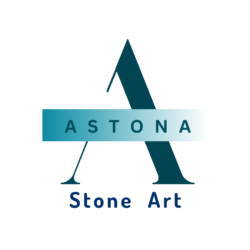The natural stone cladding can installed by two methods.

Wet Installation of Natural Stone Cladding
The wet installation is the most used method for natural stone cladding. The crucial decision is to select the best method from the variety of installation options given by the wet process.
Direct Adhesion Installation for Natural Stone Cladding
Direct adhesion is them common wet method . A wet method is considered a direct adhesion method. It makes use of a liquid latex combined with a cement-based filler powder to form cement mortar.
- Spot Bonding Installation for Natural Stone Cladding
Spot bonding makes use of adhesives to bond the stone cladding onto the wall surface. The difference between spot bonding and direct adhesion method is, the adhesive uses only 10 % of the area
Advantages of Wet Method of Installation for Natural Stone Cladding
The main advantages of wet installation of cladding are:
- The method is cheap.
- The technique does not require on-site drilling.
- No on-site drilling prevents cracks on the walls.
- Bond between the stone and cladding is entirely made throughout the area.
- look is achieved.
Disadvantages of Wet Method of Installation for Natural Stone Cladding
- Improper bond between the wall and the adhesive or the mortar can make the stone to fall off.
- The cladding stone may absorb water from the mortar. This makes the stone to change its color.
- The wet method easy.
Dry Method of Natural Stone Installation
In this method, fixed or embedded anchors, metal framing, steel brackets, or ties attach the stone to the surface. The method is applied only on thicker and stronger stone cladding, as the process requires drilling of a hole into the stone. This method demands a gap of ¾ inch to allow drainage.
The dry stone mechanical cladding system vary based on different factors like:
- Stone weight
- Cavity Size
- The design
- The strength of the wall surface
Advantages of Dry-stone cladding system
- The method is safe, and the stone stays for long life without falling off.
- The method allows for expansion and contraction.
- An air cushion is provided by the arrangement between the dry cladding and the wall surface. This air cushion helps to act as a thermal barrier.
- The arrangement gives a clean and pleasing look.
- The whole procedure consumes less time.
Disadvantages of Dry Installation method
- The method is expensive
- Improper drilling of holes results in wastage of the tiles
- Drilling process is conducted with utmost safety features.
- skilled labour is required.


